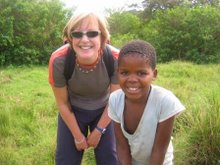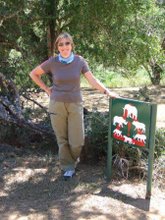So first, to the bullfight. As you will see, this is not an activity without controversy.

Some local grafitti - which explains the debate in Spain over the place of la corrida in modern life.
This fight was out of season, no need to pay extra for seats in the shade at this time of the year. Our local bullring is not that big, and was less than a third full. But those there - a wide range of locals, all ages, both genders - seemed to enjoy the spectacle. There is a lot of ritual and pageantry, costumes, music, theatre and choreography. It´s like going to a show - but nothing can disguise the fact that at the end of it, there is a death.


Before the fight, the participants (except los toros) get to parade around the bullring accompanied by marching music and that Andalucian rhythmic clapping from the crowd.
After the first couple of fights (there were six bulls in total, and three teams of toreadors), we got the gist of it. It´s very tightly controlled, not much room for error, and the bulls behave very predictably. When they first emerge into the ring they are enraged, charging at anything that moves. They are large animals and do seem very dangerous. We saw one not-so-young toreador scampering with a bull chasing him, leaping over the wooden fence in pretty much a single bound. But generally, the bullfighters know what they are doing and they play out their role. Early in the fight, the bandilleros dash out from behind the wooden barriers to tease the bull, before nicking back to safety, provocatively waving their capes - pink at this stage. And the picadores, safely astride horses and well protected with metal leggings, play their part - thrusting their long lances into the bull´s shoulder area to weaken it, before the matador comes out to play. We were reliably informed that these horses have their vocal cords cut so they can´t scream, and they are also blindfolded. It must be terrifying for them. I don´t know if the horses perform more than once, but if not, I guess that they, like the bulls, don´t know what´s in store for them.


The picadores and bandilleros tire, weaken and confuse the bull, before the matador, resplendent in his traje de luces, performs the final act.
The famous red cape is reserved for the matador, the guy who kills the bull, theoretically with a single thrust of a long sword he keeps cunningly hidden in his cape.
The famous red cape is reserved for the matador, the guy who kills the bull, theoretically with a single thrust of a long sword he keeps cunningly hidden in his cape.
There is grace, beauty and bravery, and it is hypnotic and ritualistic. But I´m not sure that it´s "right" in this day and age to subject animals to such terror. For the bulls, there´s the ignominy of a public death and an undignified departure from the bullring, dragged by a team of decorated donkeys out the back to the waiting carcinería. Our local bullring boasts a restaurant, La Espuela, famous for its steak...But for the bullfighters there´s fame and fortune, and for the most handsome and gifted, gossip and photos in ¡Hola! magazine.
The end of the line for the bull, no matter how valiantly he has fought.
So onto another local sport - this time handball, or balonmano. I had never been to a match and really had no idea what it would be like, but Antequera loves its handball team. They have been kitted out in fancy suits by the Romero tailoring shop, and were despatched to Madrid recently on the AVE fast train to represent Antequera at a big tourism exhibition, where, according to the Sol de Antequera, they impressed all with their handsomeness and physique (somehow this sounds better in the Spanish).
Like all good team sports, there´s a mascot - ours is a weird kind of creature, possibly a fox - who gets the crowd going and revs up the players. The supporters, known as la marea verde, or the green tide, also do their bit with drums and songs. The atmosphere is friendly, fun and full of laughs.
The game is played indoors, and is frenetic. It was close, and Antequera suffered an early setback when our goalie left the court injured. But the opposition, Torrevieja, were never ahead, and los verdes ended up winning 30-27. Close enough to be exciting, but not too nail biting.
It´s a really physical game, and a bit like basketball with only seven players on the court at any one time, and frequent subbings on and off.
And finally to a more sedate activity - hiking in the Andalucian countryside. The local council organises series of walks, open to all. You pay a few euro, and get a bus ride out into the countryside, a guide, and at the end beer and a sandwich (this is Spain after all!). The other day we were talking in class about English words that have found their way into the Spanish language. I asked about the word "picnic", but our teacher wasn´t sure. She said they would probably use the phrase "dar un paseo", go for a walk. The food was implicit, tacit, they didn´t need a separate word like "picnic", because of course there would be food. Well, this walk was like that.
We met at 8am, piled into the bus and set off for the pretty hillside town of Casabonella. After a discussion about (I think) the route, there were a few gentle warm ups (!) and then we set off, uphill, for at least 40 minutes before our first food stop.
We were instructed to eat our fruit and a muesli bar and drink water. Then it was off again, this time for maybe an hour, before another snack stop.
In between eating, we did manage to climb up and over a range of hills, from one valley to another.
An hour or so later, after a short diversion because our guides lost the trail, it was time to stop for lunch. This was the signal for the beers to be opened and the cigarettes came out. Bocadillos, tortillas and salads were produced, and there was 20 minutes or so of serious feeding, before the last hour of the walk. The town we ended up in was gorgeous and we strolled around it for a bit, before ending up at a cafe where piles of sandwiches, beers and soft drinks were produced. Then it was on the bus and back to Antequera, about 10 hours later. A lovely day out.




















































